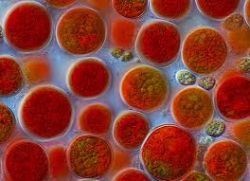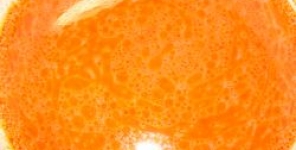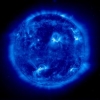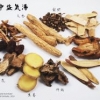L’Astaxantina attenua i danni indotti dalla irradiazione Ultravioletta B.
 Dimostrata l'efficacia della astaxantina nell'impedire i danni prodotti dalla secrezione di prostaglandina E2 a seguito della esposizione ai raggi UV-B.
Dimostrata l'efficacia della astaxantina nell'impedire i danni prodotti dalla secrezione di prostaglandina E2 a seguito della esposizione ai raggi UV-B.
Per chiarire gli effetti della regolamentazione dell'equilibrio ossido-riduttivo sulla infiammazione cutanea, abbiamo usato il potente antiossidante, l’astaxantina (AX), per valutare il suo effetto sulla secrezione di PGE2 e IL-8 indotte dagli UVB nei cheratinociti umani e analizzato il suo meccanismo di azione biologica. L'aggiunta di AX (a 8 micron) a cheratinociti umani, anche dopo l'irradiazione UVB, ha causato una down-regolazione significativa dell'aumento di secrezione di PGE2 o di IL-8 normalmente causato dall’UVB.
Tali effetti soppressivi sono stati accompagnati da una diminuita espressione dei geni codificanti per la COX-2 e IL-8 così come la proteina COX2. Le analisi eseguite utilizzando uno specifico inibitore della traslocazione del fattore NF-κB hanno dimostrato che la secrezione di PGE-2 e IL-8 indotta dagli UV-B è stata significativamente ridotta dalla somministrazione di AX prima del trattamento UV-B.
 La Western blotting delle molecole fosforilate di segnale ha rivelato che l’irradiazione UV-B (80 mJ/cm2) stimola la fosforilazione della p38, ERK e JNK, che non sono soppresse dal trattamento con AX. Al contrario AX inibisce significativamente la fosofrilazione UV-B indotta di proteine kinasi mitogene e stress attivate (MSK)-1, NF-kBp65 e CREB anche se AX veniva somministrata post irradiazione. Inoltre l’inibitore del MSK1 (H89) ha significativamente down-regolato l’aumento della secrezione di PGE-2 e IL-8 in cheratinociti esposti agli UV-B.
La Western blotting delle molecole fosforilate di segnale ha rivelato che l’irradiazione UV-B (80 mJ/cm2) stimola la fosforilazione della p38, ERK e JNK, che non sono soppresse dal trattamento con AX. Al contrario AX inibisce significativamente la fosofrilazione UV-B indotta di proteine kinasi mitogene e stress attivate (MSK)-1, NF-kBp65 e CREB anche se AX veniva somministrata post irradiazione. Inoltre l’inibitore del MSK1 (H89) ha significativamente down-regolato l’aumento della secrezione di PGE-2 e IL-8 in cheratinociti esposti agli UV-B.
Questi dati suggeriscono che l’AX attenua l’auto-fosforilazione del MSK1, richiesta per la sua attivazione, il che risulta poi in una diminuita fosforilazione del NF-kBp65, che a sua volta probabilmente porta a una deficienza dell’attività legante il DNA del NF-kB. Questo potrebbe essere associato con la significativa soppressione della secrezione della PGE-2 e della IL-8 causata dalla down-regolazione della COX-2 e IL-8 a livello genico e proteico.
Storia della pubblicazione:
Fonte: Experimental Dermatology Special Issue: 12th Annual Meeting of the Japanese Photoaging Research Society. Volume 21, Issue Supplement s1, pages 11–17, July 2012
Titolo: Astaxanthin attenuates the UVB-induced secretion of prostaglandin E2 and interleukin-8 in human keratinocytes by interrupting MSK1 phosphorylation in a ROS depletion–independent manner
Autori: Shuko Terazawa, Hiroaki Nakajima, Mori Shingo, Takao Niwano, Genji Imokawa
Affiliazioni: School of Bioscience and Biotechnology, Tokyo University of Technology, Hachioji, Tokyo, Japan
Abstract: To elucidate the effects of redox balance regulation on cutaneous inflammation, we used the potent antioxidant astaxanthin (AX) to assess its effect on the UVB-induced secretion of PGE2 and IL-8 in human keratinocytes and analysed its biological mechanism of action. The addition of AX (at 8 μm) to human keratinocytes even after UVB irradiation significantly down-regulated the increased secretion of PGE2 or IL-8. Those suppressive effects were accompanied by significantly decreased expression of genes encoding COX-2 or IL-8 as well as COX-2 protein. Analysis using a specific NF-κB tanslocation inhibitor demonstrated that the UVB-stimulated secretion of PGE2 and IL-8 was significantly abolished by its treatment prior to UVB irradiation. Western blotting of phosphorylated signalling molecules revealed that UVB irradiation (80 mJ/cm2) significantly stimulated the phosphorylation of p38, ERK and JNK, which was not suppressed by treatment with AX after irradiation. In contrast, AX significantly inhibited the UVB-increased phosphorylation of mitogen- and stress-activated protein kinase (MSK)-1, NF-kBp65 or CREB even when treated postirradiation. Further, the MSK1 inhibitor H89 significantly down-regulated the increased secretion of PGE2 and IL-8 in UVB-exposed human keratinocytes, following post-irradiation treatment. These findings suggests that AX attenuates the auto-phosphorylation of MSK1 required for its activation, which results in the decreased phosphorylation of NF-kBp65, which in turn probably leads to a deficiency of NF-kB DNA binding activity. This may be associated with the significant suppression of PGE2/IL-8 secretion via the down-regulated expression of COX-2 and IL-8 at the gene and/or protein levels.





